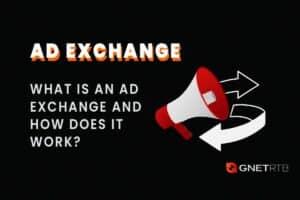Real Time Bidding (RTB) is essential for publishers and advertisers to be able to reach the right user at a fair price. This was the sine qua non that made the programmatic advertising develop to the point that, in the last few years, has become responsible for the most of digital advertising spendings.
And we believe that this won’t change in the medium term. That’s why we prepared this article to help you understand what RTB is, how it works and why it’s so important for your business.
What is the Real-Time Bidding (RTB)?
Released in the late 2000s, RTB is a protocol originally designed to help publishers sell remaining inventory to the advertisers. Nowadays, RTB is used to sell all types of inventories, including the premium ones.
RTB allows advertisers to buy individual impressions from multiple publishers. In this manner, you can accurately select audiences and bid based on known information about the website and the users. Additionally, publishers benefit from receiving higher CPMs.
The process takes less than a second. Transactions take place through an SSP or an ad exchange. Buyers include ad exchanges, ATDs, ad networks and DSPs, giving the publisher greater control over ad inventory and optimizing the yield.
When a user visits a website or an app, an RTB occurs, and advertisers bid on the ad space provided by the publisher. The advertiser who bids the highest for the space prints the advertising on the publisher’s website or app.
OpenRTB
Formerly called Open RTB Consortium, the Open RTB began its development in 2010. Led by the Interactive Advertising Bureau (IAB) and AdTech companies on both demand and supply sides, Open RTB provides companies API specifications. This protocol allows platforms to communicate using a common language to buy and sell digital media.
How does Real-Time Bidding works
Through RTB, advertisers target the ad inventory that are relevant for their campaigns. This process occurs through several programmatic advertising technologies, generating better ROI and higher eCPMs. RTB also allows advertisers to adjust their budgets in real time to optimize ad performance. RTB technical process is very complex and involves many platforms in the programmatic ecosystem. An infographic can be found below, and it describes how RTB ad exchange works.

The process takes place as follows:
- A user accesses a web page;
- This page provides an ad slot that contains a JavaScript Object Notation (JSON) code. This code makes an ad request and sends additional data about the user such as location, device type and operating system;
- The publisher ad server checks if there are any direct campaigns configured for this user and, if there are none, returns with an SSP’s ad tag offering the ad impression through RTB;
- The browser loads the SSP’s ad tag script that contains user information and channel details for the ad exchange;
- The ad exchange notifies the DSP about the available ad impression and makes a bid request to the potential buyers;
- Buyers evaluate the request, verify if the parameters match the target they desire and, if so, send a bid response with a bid and ad markup they would like to display;
- The ad exchange receives the bids and the highest bidder is awarded with the right to print. The highest bidder pays the price of the second highest bid plus an additional, usually $0.01 (second-price auction). After that, the ad exchange notifies the winning DSP of server-to-server request or ad markup that contains a pixel with the auto populated price macro. Then, the winning ad is sent by the DSP to the browser;
- The DSP’s ad markup is loaded into the browser and requests the ad creative from a DSPs ad server or from a CDN. An impression tracking pixel is also triggered and notifies the advertiser ad server that an impression has been published.
- The DSP ad server sends the creative to the browser and the ad is displayed to the user.
The whole process takes place in real time, typically within 150 milliseconds. Whenever a webpage is loaded or refreshed, a new ad request is sent to start a new RTB auction.
Programmatic Buying involved on Real-Time Bidding
As you probably already know, different technologies and buyers are involved in the process of buying and selling ads through RTB. Now is time to understand how each of them participates in the process:
SSP
RTB allows publishers to sell and advertisers to buy ads supported by an SSP. By connecting publishers to different ad exchanges, DSPs and ad networks, SSPs enable publishers to sell their impressions to a wider pool of potential buyers and, by doing that, they can maximize their revenue.
DSP
A DSP is a programmatic software that allows advertisers to buy media from several sources in a preprogrammed and centralized way. With the right DSP, the advertiser can find the ad inventory that reaches the right audience, with the right message, in the best moment, and within a defined budget.
Ad Exchange
Through an ad exchange, ATDs, DSPs, SSPs and ad networks can bid on the ad inventory of multiple publishers via RTB. They determine the price they are willing to pay in the ad slot to participate in the auction, as well as having an overview of where their ads are being exhibited.
Ad Networks
The ad network is an intermediary that buys and sells ad inventory through DSPs and SSPs. Some offer a management platform to advertisers and an account manager, performing an advisory approach so that campaigns are executed within high performance.
ATD
ATDs provide planning services and media operation campaigns on behalf of other advertisers or agencies. They utilize DSPs and report the final results to the advertisers.
Difference between RTB and Programmatic
RTB is neither different, nor programmatic identical. RTB is a part of the programmatic. However, programmatic is not just about buying and selling ad space. It normally affects the automation of marketing procedures.
Programmatic buying basically consists of scripting marketing actions in order to allow them to be mechanized with the minimum “human touches” as possible. The concept is based on several fundamental principles, such as automation to increase responsiveness and reduce
costs.
Nevertheless, programmatic buying is also characterized by a certain globalization of purchases/sales of advertising space. DSP/SSP platforms accumulate offers and requests from around the world.
Programmatic is largely based on the data you have from the public. The more accurate the user profile is, the better the campaign will be. Generally, advertisers involved in RTB use programmatic advertising to improve the campaigns efficiency.
Although RTB is automated, not all programmatic advertising uses RTB. An example of this are the advertisers that buy ad inventory through programmatic way directly from publishers, instead of bidding on an open market with RTB.
Transaction Types

- RTB: When ad inventory prices are decided through an auction and any advertiser or publisher can participate. It is considered a cost-effective way to buy media with a large audience.
- Programmatic Direct: The publisher skips auctions and sells the ad inventory at a fixed cost per thousand (CPM) to one or several advertisers.
- Open exchange: A more traditional form of programmatic auction and also known as RTB or Open Marketplace, auctions are open to marketers on ad exchanges, SSPs and ad networks. Everyone has the opportunity to bid on all available publisher inventory.
- PMP: Similar to open auctions, but only selected advertisers can participate.
- Programmatic guaranteed: When advertisers negotiate the purchase of ad inventory directly with the publisher, but are not tied to manual processes. The buyer guarantees the purchase of a fixed number of ad impression, while the publisher guarantees delivery of the exact number of ad impression for a fixed price.
- Preferred Deal: Also known as Programmatic not guaranteed, the buyer has preference to bid at the negotiated price, but is not obligated to bid. Beyond that, preferred deals give you the option to reserve inventory for a premium price.
How much does Real-Time Bidding costs?
RTB works through a payment model called cost per thousand (CPM), that means, a cost per a thousand impressions. CPM is the standard pricing model, where advertisers pay a price based on the number of impressions that each placement receives monthly or quarterly.
CPMs for display ads diversify, but what makes them cost-effective is the flexibility, as some traditional ads don’t allow you to change the layout, CTA, or the messages once an ad starts running. Therefore, if the advertising is not effective, the cost per action will probably be higher.
Since graphic advertising is dynamic and CPM-based, it allows advertisers to change a campaign as it runs and gives brands greater flexibility to optimize their campaigns and maximize budget effectiveness.
Why is RTB important for publishers and advertises?
The best RTBs on the market use big data, smart algorithms, and technology to enable publishers and sellers to maximize their revenues while advertisers reach the most relevant users. These solutions help stakeholders to increase efficiency and achieve their goals.
Why is RTB important for publishers and sellers?
- Maximize revenues through a competitive auction process;
- It is ascendable, as it offers access to a large number of demand sources;
- Provides insights to improve monetization;
Why is RTB important for buyers and brands?
- It’s cost-effective as the advertiser only bids for relevant users;
- Offers dynamic segmentation parameters and access to premium ad inventory;
- Allows advanced targeting and access to Latin American citizenry.
Conclusion
To summarize, many buyers and brands are using RTB in programmatic advertising. This is a great time for sellers and publishers, as digital advertising is constantly growing with new programmatic ad formats.
Although RTB is a complex process, it is possible to elevate both revenue and demand for products and services, but it is necessary to lean on experts to reach full potential.
If you want to try RTB and prove its efficiency, or want to meet a new SSP partner with its own ad exchange technology, GnetRTB may be the best place for you! Access this link and be attended by our expert team.




